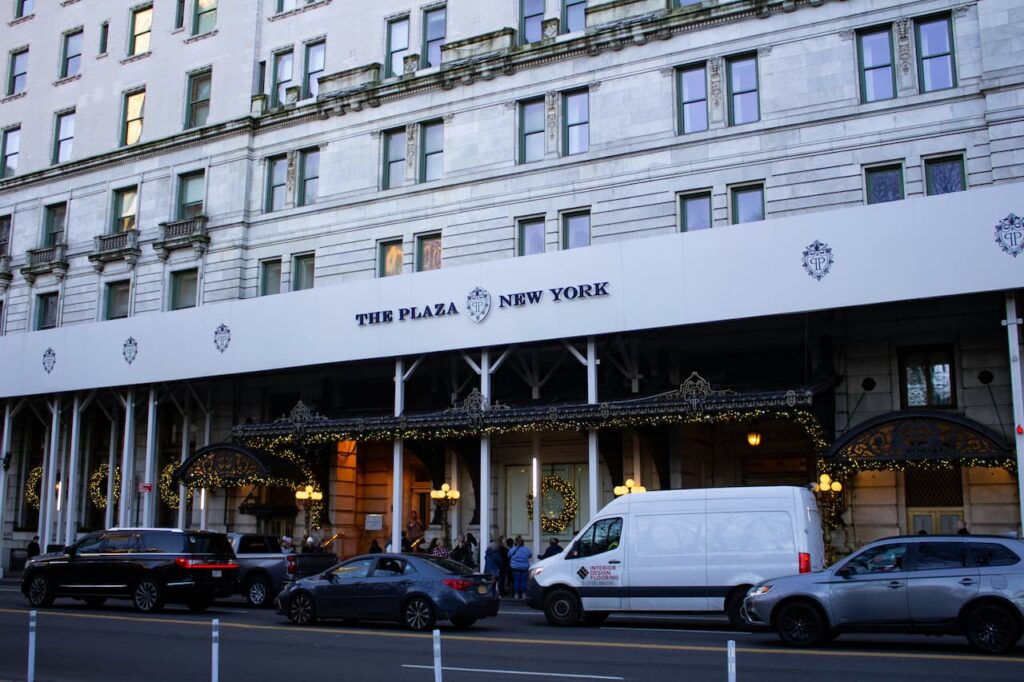The way hotels are built and decorated has shifted a lot because of guests preferences, new technology and big changes in society
Let’s look how these factors have made hotel design evolve over time.
Early 20th Century
Hotels of the early 20th century were opulent and grandiose, designed to cater to the affluent classes.
They featured lavish lobbies, grand ballrooms and luxury materials like marble, gold, and crystal.
They reflected the wealth and status. These hotels served as social hubs and hosting balls for high society events.
- The Ritz London. Opened in 1906, The Ritz exemplifies luxury with its grandiose architecture, lavish interiors, including Louis XVI-style furnishings.
- The Plaza Hotel, New York. Crystal chandeliers and elegant rooms – signature design of New York’s Plaza Hotel opened in 1907.
Mid-20th Century
After World War II the economic boom and rise of the automobile culture led to the popularity of motels and chain hotels.
They prioritized functional design and low costs to cater middle-class families traveling by car. The architecture became more standardized and more minimalistic.
Motels offered convenient roadside accommodations often with amenities like free parking and pool access.
- Holiday Inn – Representing the rise of chain hotels, Holiday Inn became synonymous with affordable, standardized lodging across the United States, starting in the 1950s.
- Motel 6 – Founded in 1962, Motel 6 exemplified the functional and accessible design of motels, offering very simple and affordable rooms.
Late 20th Century
The 1980s and 1990s saw the emergence of boutique hotels with unique and themed designs.
The goal was to offer an immersive experience. Design elements were tailored to create distinctive environments, from retro-chic to modern minimalist.
- Morgans Hotel, New York – Opened in 1984, Morgans Hotel is often cited as the first boutique hotel, featuring a stylish and unique design.
- Kimpton Hotels – Starting in 1981, Kimpton Hotels became known for its unique designs.
Early 21st Century
Sustainability and technology became driving forces in hotel design. The use of renewable energy, water-saving fixtures, and recycled materials, became increasingly important.
- 1 Hotel Central Park, New York – This hotel focuses on sustainability. It has organic bedding, and a living green wall.
- Aloft Hotels – Part of the Starwood group, Aloft Hotels incorporate modern technology and design, offering features like keyless entry and a tech-forward guest experience.
Recent Trends
Recent trends in hotel design emphasize experience-driven concepts, blending indoor and outdoor spaces and focusing on personalization and flexibility.
Hotels now offer varied experiences, including themed accommodations, wellness-centric amenities, and spaces that adapt to different activities like co-working and socializing.
This shift reflects the changing lifestyle of travelers who seek not just a place to stay but a memorable experience.
- Treehotel, Sweden – Offering a unique blend of nature and modern design, Treehotel features individual treehouse rooms with contemporary and eco-friendly designs.
- Zoku Amsterdam – This hotel represents the trend of flexible living and working spaces, with its hybrid apartments designed for both short and long-term stays.
- Big Sur’s unique offerings, where each property provides a distinct experience, whether it’s a cottage with ocean views or a secluded retreat in the wilderness. Hikinginbigsur.com features where to stay in Big Sur including airbnbs, hotels and Big Sur vacation packages that allow you to save on most popular hotels in Big Sur.

The Future
- Hotel Ottilia, Copenhagen: This hotel incorporates advanced technology and sustainability, including self-cleaning rooms and energy-efficient systems.
- The Zetter Townhouse, London: This hotel is an example of future trends with its focus on local community engagement, unique design elements, and personalized guest experiences.
The future of hotel design is expected to further integrate smart technology, sustainable practices, and community engagement. Hotels will likely focus on creating adaptive spaces that can serve multiple functions, from accommodation to social and business purposes. The design will continue to evolve to meet the environmental challenges, incorporating more green spaces, sustainable materials, and energy-efficient systems.
Throughout these periods, hotel design has continuously adapted to the changing needs and preferences of travelers, mirroring broader social and economic trends. From luxury and grandeur to functionality and efficiency, and now towards sustainability, technology, and personalized experiences, the evolution of hotel design reflects the dynamic nature of the travel and hospitality industry.